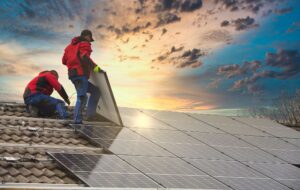
One of the largest residential solar installers, Sunnova, went belly up on June 8. The company had over $10 billion in debt and a market cap of over a billion dollars less than a year ago. While aggressive spending on expansion and poor management account for some of Sunnova’s problems, they also faced significant policy headwinds: high interest rates, higher costs due to inflation, uncertainty and higher costs due to tariffs, and freezing of Inflation Reduction Act subsidies.
Those familiar with this space may remember Solyndra, a failed solar company that had received a $500 million loan from the federal government. Some people point to a $3 billion loan guarantee with Sunnova under the Biden administration as a larger version of Solyndra. This is incorrect.
A loan guarantee differs from a loan. The guarantor agrees to make up the difference of what a defaulting borrower agreed to pay and what they actually paid. Furthermore, the $3 billion loan guarantee was for consumer loans to install solar panels, not loans made directly to Sunnova itself. Finally, less than $50 million in loans were made under this loan guarantee program before the Trump administration cancelled it last month. This means, at least at the federal level, that the Solyndra bankruptcy cost taxpayers at least ten times more.
Besides the federal loan guarantee, the Sunnova bankruptcy highlights many of the distortions that governments have created in solar energy. But it is also personal: I installed solar panels on my house in New Jersey using Sunnova and can speak to how government incentives affected my decision.
The solar panel array Sunnova sold me had a sticker price of about $20,000. I estimate it saved me $80 to $120 per month on my electricity bill. So let’s call it $1200/year in energy savings. That’s a 6 percent return on investment. Not bad, but not great either — especially given the significant outlay required up front — and the fact that the panels depreciate over time. But when you incorporate federal and state subsidies, installing solar panels became a no-brainer.
At the time, the federal government was offering a 30 percent tax credit on solar panels. In effect, this reduced the price from $20,000 to $14,000. The rate of return from my $1200 in annual savings jumped to 8.6 percent. Then the state subsidy kicked in.
Some states engage in a practice called net metering where utilities must pay owners of solar energy for any electricity they put back on the grid. There are many complications and problems with this method that we need not worry about here. In my case, NJ required energy producers to “buy” solar power generation. Every additional thousand kilowatts of energy my solar panels generated, for my own benefit mind you, I could also generate something called an SREC (Solar Renewable Energy Certificate) and sell it on an exchange.
The price of SRECs ranged from about $200 to $240 while I owned the system and my system would generate 2-3 SRECS per year. So call that roughly $500/year in additional direct payments to me, the owner of the solar panels, and my rate of return rises to 12 percent — not a bad deal. So I, and thousands of others, bought solar panels.
And that’s the calculation with just two subsidies. Based on the time, location, and nature of the purchase, there are dozens of other forms of subsidies for solar panels. Which brings us back to the Sunnova bankruptcy and the state of solar power in the US.
Solar energy has become an enormous industry over the last decade. Part of this is due to rapidly improving technology and significant versatility. Improving technology has led to solar panels with higher efficiency and lower production costs. There are also solar panels being developed that can capture sunlight from both sides. Improvements in materials like organic photovoltaics and ultra-thin silicon are leading to thin, bendable, and lightweight solar modules that can be integrated into various surfaces — including windows and facades — as transparent solar panels become a reality.
The economic question, though, is not only about how impressive solar technology is, but whether the cost of producing, installing, and maintaining solar panels can be justified based on their direct benefits to consumers. Environmental activists and opportunistic politicians and the solar lobby obscured the answer to this question by asserting massive indirect benefits for the climate from solar energy and subsidizing solar installation at every opportunity they could find — which leads to my story.
Solar power (and wind power for that matter) has several major problems as a large-scale source of electricity for the grid. The most important problem is its intermittent nature. Solar panels don’t generate electricity at night. Nor do they generate much when it is cloudy. Furthermore, power generation is unreliable — it changes over seasons and can’t be dialed up or dialed down based on people’s demand for electricity — such as during severe weather events. The main way to deal with this problem entails massive energy storage (in effect, giant batteries) that are prohibitively expensive to build at scale.
Another oft-overlooked problem is the cost of transmission. The best locations for solar power installations are not necessarily near places with high demand for electricity. In fact, cities with high demand for electricity also have much higher opportunity costs for land than rural areas. But building transmission lines is expensive and not usually factored into the cost/benefit analysis of solar installations because regulators require utility companies (really their rate payers) to foot the bill of building transmission lines.
The explosion of solar energy has been driven by heavy government subsidization around the world. As those subsidies dry up or are cut off, such as with the current administration’s freezing of Inflation Reduction Act funds or the Big Beautiful Bill’s aggressive retiring of renewable energy subsidies, the cost/benefit calculus for solar changes, too. There will still be a market for solar energy without subsidies. It will just be much smaller. If that’s the case, we can expect stormy skies ahead for solar companies of all stripes. Sunnova’s bankruptcy is likely the beginning, rather than the end, of solar investors’ troubles.
